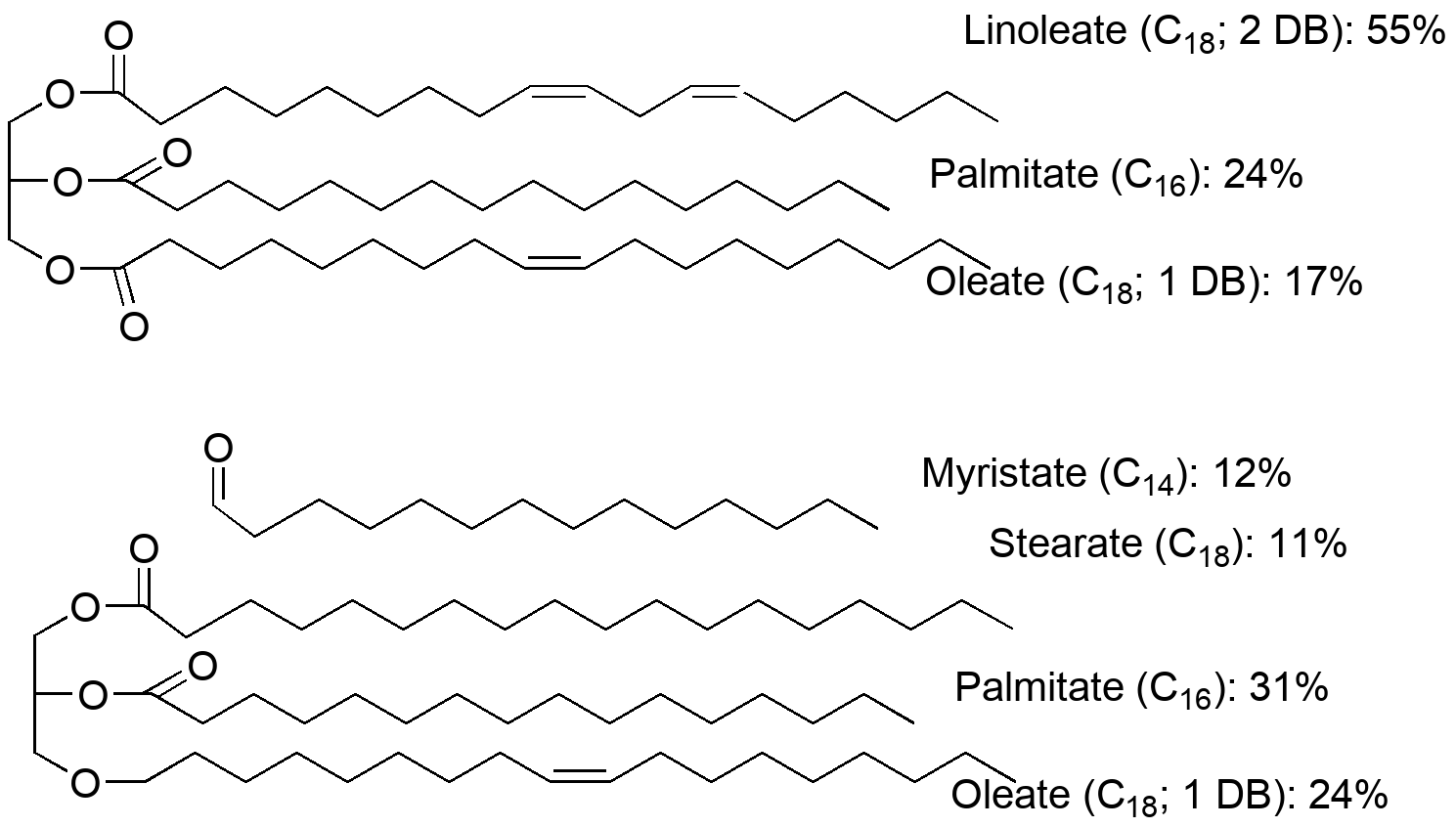Consequences of the Catalytic Hydrogenation Mechanism
As we discussed, catalytic hydrogenation involves a sequence of steps on the metal surface. H2 adsorbs and is cleaved into two hydrogen atoms bonded to the metal surface; the alkene arrives and is adsorbed; it then inserts into one Pd-H bond, and finally the second C-H bond forms and the alkane comes off the surface. However, each of the steps (other than maybe the last) is reversible.There is always a little bit of the mixture left unhydrogenated, and this winds up as a mixture of E and Z. Further, you can see that this presents a mechanism by which the double bond can migrate along the chain. This has some important technological consequences.
In the late 1800's, there was a large supply of cotton seed which were essentially waste from textile manufacturing. Cotton seeds are rich in oil, but the composition of the oil didn't allow it to be useful for much. However, look at the difference between the composition of cottonseed and the composition of butter fat:

In the early 1900s, chemists worked out a method for partially hydrogenating cottonseed oil. This increased the amount of saturated alkyl chains (0 DB) to about 29% and dropped the polyunsaturated chains to about 20%. This had the effect that, like butter, the product was solid at room temperature. This "cyrstallized cottonseed oil" was blessed with the name "Crisco®" and found almost a century of use in cooking.
Of course the upshot of our demonstration above is that much of the double bond content in "partially hydrogenated vegetable oil" is now trans, rather than the biosynthetic cis form. And unfortunately, our bodies respond poorly to these unnatural isomers; trans fat is linked to buildup of arterial plaque and circulatory diseases. While Crisco® is still alive as a brand, it's been reformulated to not contain detectable amounts of trans fats.